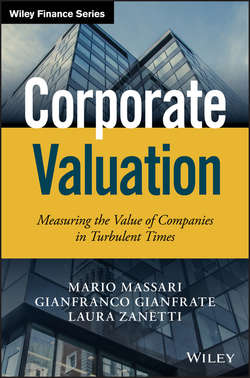Читать книгу Corporate Valuation - Massari Mario - Страница 9
На сайте Литреса книга снята с продажи.
Chapter 1
Introduction
1.3 THE TIME VALUE OF MONEY
ОглавлениеIrving Fisher is considered the founding father of modern finance theory, not only for his market equilibrium model, which explains investment and consumption decisions, but also because of his almost-obsessive insistence on the need to determine any asset value exclusively as a function of its expected discounted cash flows.
Thanks to Fisher, since the early 1920s the main building block of valuation has been identified as follows: any asset value (financial or real) is a function of the cash flows it can generate and of the time distributions of the cash flows.2
Through Fisher's contribution, the concept of time value of money became solidified, thus building the rationale for the universally agreed need for a present value approach to valuation.
So, without uncertainty, or, as it is often said, in a deterministic framework, an investment, firm, or more generally any asset value can be obtained by the following:
● Calculate the asset relevant cash flows and their time distributions.
● Discount any cash flows at a rate expressing the time value of money.
Typically, this rate is the return rate of investments whose issuers are virtually free of any insolvency risk, such as government bonds (so-called risk-free rate). Exhibit 1.2 shows the concept.
Exhibit 1.2 Investment cash flow profile and mechanics of discounting
2
Irving Fisher, The Rate of Interest (New York: Macmillan 1907) and The Theory of Interest (New York: Macmillan 1930).
